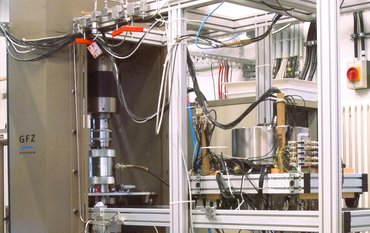In a new research project called G-MONARCH, gravimetric methods are being used to improve our understanding of the Alpine water balance using the Zugspitze as an example. G-MONARCH stands for “Gravity-MONitoring for Alpine Research Catchment Hydrology”. By analysing gravity, it is possible to make statements about the underlying masses and their changes. The project is being led by Franziska Koch from the University of Natural Resources and Life Sciences (BOKU) Vienna, while Christian Voigt, scientist in GFZ-Section 1.2 “Global Geomonitoring and Gravity Field” and head of the Zugspitze Geodynamic Observatory Germany (ZUGOG), and Frank Flechtner, head of Section 1.2 and professor at TU Berlin, are in charge of the project at the GFZ German Research Centre for Geosciences.
Innovative approach with ideal conditions on the Zugspitze
The Zugspitze offers ideal conditions for this project due to its special geology and the existing infrastructure and instrumentation. A superconducting gravimeter installed in the former, now listed Max Planck Laboratory at the summit of the Zugspitze, part of the Zugspitze Geodynamic Observatory Germany (ZUGOG) installed by the GFZ in 2018, continuously measures the changes in gravitational acceleration at this location. The gravity acceleration is often given as a value of 9.81 m/s² and simplistically assumed to be constant at the Earth's surface, but in reality it is variable both spatially and temporally: masses as the source of gravity are not evenly distributed everywhere on and in the Earth and they can change locally in time – for example due to precipitation or glacial melting.
The great innovation compared to all other existing hydrological and meteorological measurement methods is that gravimetry can be used to record and quantify the sum of all temporal hydrological mass changes in the form of water, snow and ice in the surrounding area of approx. 50 square kilometres. The Zugspitze is therefore weighed continuously, so to speak: It becomes heavier when snow falls and lighter when snow and glaciers melt.
Background to the project
The kick-off event for the G-MONARCH project took place on 16 and 17 November 2023 in Vienna. The project is funded by the Austrian Science Fund FWF and the German Research Foundation DFG over a period of three years with a total volume of almost 1 million euros. Researchers from the University of Natural Resources and Life Sciences (BOKU) Vienna, GFZ Potsdam, TU Berlin and the University of Augsburg as well as the Schneefernerhaus Environmental Research Station UFS and other national and international partners are involved in the project.
Tasks and objectives of the project
In the course of the project, intensive investigations will be carried out in the Zugspitze region on the hydrology of the area and on the build-up and degradation of the snow cover. A comprehensive range of measuring instruments, satellite and drone-based Earth observation and computer-aided modelling approaches will be used.
The aim of these investigations is to clarify the extent to which the addition of gravimetric methods can contribute to an improved recording of hydrological processes in the Alpine region and to what extent the knowledge gained at the Zugspitze can be transferred to non-instrumented regions. It is also expected to be able to make important contributions to support future satellite missions in order to enable better area-wide observation of snow and water resources worldwide.
Scientific contact:
Dr. Franziska Koch
Prof. Dr. Karsten Schulz
University of Natural Resources and Life Sciences (BOKU) Vienna
Dr. Christian Voigt
GFZ Potsdam
Prof. Dr. Frank Flechtner
GFZ Potsdam and TU Berlin
Apl. Prof. Dr. Karl-Friedrich Wetzel
University Augsburg


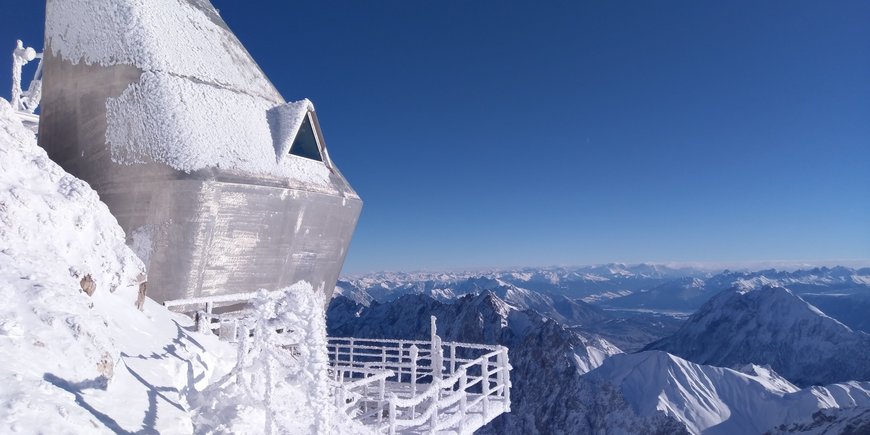
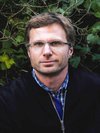
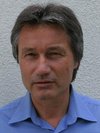
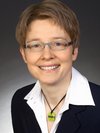




![[Translate to English:] Torsten Sachs in front of a climate station on a field](/fileadmin/_processed_/3/9/csm__TorstenSachs_bearbeitet_GS_4a1365ef84.jpeg)

![[Translate to English:] left image flood at the Ahrtal: image from above, several houses are flooded; left image:: Heidi Kreibich;](/fileadmin/_processed_/4/4/csm_Bild2_9af0130e9f.png)



![[Translate to English:] Start der Vega Rakete](/fileadmin/_processed_/6/4/csm_20231201-kachel_Vega-VV23-launch_ESA-CNES-Arianespace_706716b68c.jpeg)









![[Translate to English:] Poster exhibition at the Brandenburg Hydrogen Day at the GFZ, some participants in the foreground](/fileadmin/_processed_/6/5/csm_Erster_Brandenburgischer_Wasserstofftag_GFZ_402fcec95e.jpeg)
![[Translate to English:] Group picture of the participants](/fileadmin/_processed_/9/4/csm_20231108_CAWa-Workshop-Tashkent_Gruppenbild_99ea779d8a.jpeg)

![[Translate to English:] [Translate to English:] Hörsaal](/fileadmin/_processed_/e/6/csm_H%C3%B6rsal_e21ac645fb.jpeg)


![[Translate to English:] The Delegations in the Historic Library on the Telegrafenberg. In the back there are from left to right, the Dutch Ambassador for Germany, Ronald van Roeden, the Dutch Minister for Education, Culture and Science, Robbert Dijkgraaf and the scientific director of the GFZ, Susanne Buiter.](/fileadmin/_processed_/d/b/csm_Kachel-2_9eba4b4212.jpeg)


